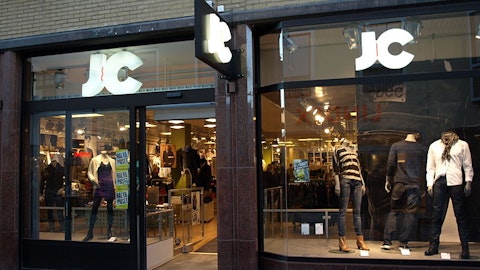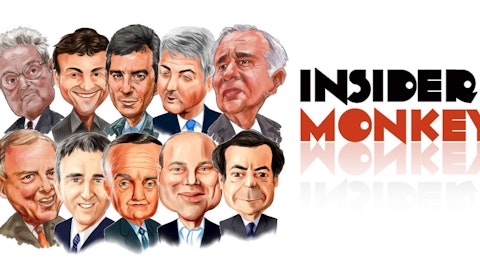Key Risks
UTX is facing several challenges at the moment. For the most part, they seem like transitory issues to us – foreign currency headwinds will eventually abate, end markets will grow over time as global GDP growth recovers, and the company is overcoming ramp-up issues at a distribution facility that impacted the profitability of its aircraft engine production by $500 million in the third quarter.
What’s less certain is the company’s plan to take back market share in its Otis business segment to help drive future earnings growth. This business has seen its market share contract over the last few years as it picked profitability (20%+ operating margin) over share gains. In China, for example, Otis’ market share is estimated to have fallen from 25% to about 15% over the last few years. The broader slowdown in Chinese infrastructure markets has only added to Otis’ pains, and UTX’s business in China is expected to be down 10% next year. Fortunately, China represents just 6% of UTX’s sales today.
Management expects Otis’ operating profit to decline by about $250 million next year as it sacrifices some margin in an attempt to take back market share and generate profit growth, which has largely been elusive over the last five years. We usually prefer to see companies head the other way – sacrificing market share for better profitability – so this new strategy gives us some hesitation.
UTX’s aircraft engine business will also face pressure next year as it continues boosting production of its new geared turbofan jet engines, which are expected to continue losing money over the next several years. Like many of UTX’s products, these are long-term investments that payoff as high-margin aftermarket revenue is recognized over the following decades.
Finally, UTX’s military aerospace business faces plenty of uncertainty caused by sequestration. After divesting Sikorsky, UTX’s defense exposure dropped from 19% of total company sales to 13%, but that’s still a material amount of exposure.
Overall, it seems like it could take at least the next year for UTX to overcome the challenges impacting its earnings growth. If execution is weak on jet engine production or restructuring actions and Otis’ market share strategy backfires, the stock could see further weakness.
Dividend Analysis
We analyze 25+ years of dividend data and 10+ years of fundamental data to understand the safety and growth prospects of a dividend. UTX’s long-term dividend and fundamental data charts can all be seen by clicking here. Please note that UTX’s historical results include its Sikorsky business, which should be divested by the end of 2015 and result in higher profitability and growth.
Dividend Safety Score
Our Safety Score answers the question, “Is the current dividend payment safe?” We look at factors such as current and historical EPS and FCF payout ratios, debt levels, free cash flow generation, industry cyclicality, ROIC trends, and more. Scores of 50 are average, 75 or higher is very good, and 25 or lower is considered weak.
With relatively low payout ratios, consistent free cash flow from its aftermarket business, and a reasonable balance sheet, it comes as no surprise that UTX earned a high dividend Safety Score of 83.
Over the last 12 months, UTX’s dividend has consumed 40% of the company’s earnings, which provides plenty of flexibility for UTX to continue paying and growing its dividend. Looking below, we can see that UTX’s payout ratio has remained remarkably consistent at around 30% during the past decade. UTX appears to generate very predictable earnings and has done a nice job of growing earnings in line with dividend growth to keep the payout ratio steady.

Source: Simply Safe Dividends

Source: Simply Safe Dividends
For dividend companies with enough operating history, we like to analyze how their businesses performed during the financial crisis. Despite meaningful exposure to cyclical markets such as construction, UTX’s sales and earnings only fell by 11% and 16%, respectively, during fiscal year 2009. The company’s large installed base results in a sizable aftermarket business that is less sensitive to swings in the economy – repairs and replacement parts cannot be as easily avoided as new equipment orders.

Source: Simply Safe Dividends





